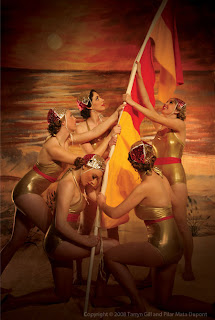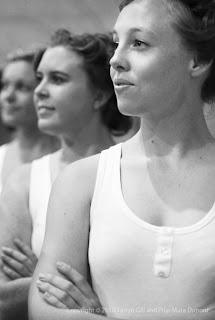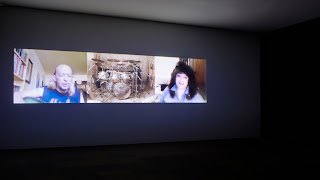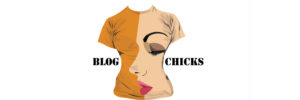If it weren’t for the good folk of south-western Sydney, I would never have made it. I had been to Casula Powerhouse before, though before they changed the access to it, now via a new service road. I couldn’t find it – too new to appear on sat nav and certainly not in print yet. I got hopelessly lost but everyone I came across was very helpful about how to get there, from the staff at Casula (on the phone), to the graffiti artists painting the local water-towers, to the traffic men directing (no) traffic. I finally found my way and was particularly glad I did.
| Water tower Casula Powerhouse |
I can’t deny that Casula Powerhouse and Campbelltown Arts Centre are a long way from my usual haunts. It is fact which just needs to be acknowledged (I imagine for many of my gentle readers). It is not a monthly visit for me I have to confess, not even bi-annually. For me it is a major expedition which requires time and planning, plenty of toll money, preferably a travel companion and definitely a cut lunch. This time the companion couldn’t make it, but I was grateful for the cut lunch.
I particularly wanted to visit Casula Powerhouse to see Onside – women in sport and the new exhibition at Campbelltown Art Centre The Social, both of which I would describe as two solid exhibitions, showing a great line up of impressive artists, dealing with some really interesting issues.
Onside looks at women in the culture and cult of sport. We are continually told that art and sport don’t sit comfortably together, to the point that many of us believe it. I don’t think this cliche exists at a individual level – we are all the sum of many parts, with many passions and interests – but it certainly exists at a macro level when it comes to things like funding, policy, media attention and due acknowledgement. Ben Quilty, artist and recent appointment to the Board of Trustees at the Art Gallery of NSW, has penned a great piece in the SMH about sport and art and tax. He is suggesting a greater equity in education: just as students pay HECS to go to art school and then pay tax on their successes in prizes etc, so too should elite sports people who currently, don’t. It’s an interesting article by an acclaimed artist whose contribution to the community’s understanding and appreciation of (particularly) men at war is significant and enduring. When this broader contribution to contemporary Australian discourse is assessed alongside his compatriots efforts in the pool in London 2012, and the extraordinary levels of funding pumped their way, his arguments are worth consideration.
Back to Onside. It is a fairly diverse group of artists, each of whom use their respective medium of sculpture, video, photography, collage even, to think about that level playing field, how deeply ingrained it is in our national psyche and the role women play in it. There is great humour, satire, talent and some sexiness on show. The only downside is that the exhibition is hung across a number of spaces which are not necessarily connected so the potential play between the artworks is diluted in parts. Casula is great venue and offers great opportunities for ambitious projects, but it is a difficult space in which to pull an exhibition together.
 |
| Anne Zahalka Liverpool, where women kick goals 2012 |
 |
| Anne Zahalka Davina, Senior Project Manager, 2010/13 from the series Playing the Game! |
I have always been a fan of Anne Zahalka‘s work (as is, I gather, a couple in Daylesford who own a guest house inspired by and named after this major Australian artist). Here she shows a series of portraits of women, real people, fit, kitted out and seriously engaged in their respective sports. Some of the work is new, made specifically for this exhibition; other pieces are from her ongoing series Playing the game!, first seen in 2009.
Liverpool Where women kick goals is an image of inspiration. Culture and sport meet head on as Muslim Australian women don the hijab and footie boots, to tackle what is upheld as the ultimate Anglo-Celtic male bastion. These women are real footie players and have become the real heroes. This is the potential for sport and the concept of the level playing field. Zahalka has captured these women and their determination to succeed in a male dominated, anglo-celtic world, be it on or off the pitch.
Though Zahalka’s portraits are highly staged, leaving little room for spontaneity or accident, she does use real people. What is presented – sitter, costume/ uniform, prop – tells one side of the story, but it is what is left out which adds the layers. With all the garb, Davina is the roller blader not to be messed with. But remove the war paint and elbow padding and Davina is a Senior Project Manager – of something tangible. The portrait becomes more complex: Zahalka teases out a glimpse of the whole person. We are none of us, particularly women, one dimensional. We are the sum of many cultural, physical, emotional (hormonal even!) parts.
Anne Zahalka is one of Australia’s leading photographers and throughout her extensive career, she has taken a similar approach to making images of Australian landscapes, cultural institutions, icons and activities. On the surface, a panoramic view of such sharpness, but on consideration, a questioning of what it is we hold dear and why – with humour, satire and very focussed eye.
Whereas Zahalka upholds ordinary people as heroes, Tarryn Gill & Pilar Mata Dupont applaud the ideal. The hero is perfectly poised, glamorous, wears lipstick and spangles. The idyll though is tainted with an uncomfortably satirical undertone.
 |
|
Tarryn Gill & Pilar Mata Dupont Blood sport 2011
giclee print on aluminium, 120x80cm
image courtesy the artists
|
 |
| Tarryn Gill & Pilar Mata Dupont As certain as the sun will rise, our flys will fly 2008 giclee print 20×30″ image courtesy the artists |
Gill and Mata Dupont are based in Perth, working collaboratively in a practice that intertwines photography, performance, choreography, film, installation and design. Blood Sport is a self-portrait of the artists. They are joyous in their victory, immaculate though artfully dowdy in their grooming, all of which is at extreme odds to their blood smeared bodies and clothing. Doing your best is not enough to secure first place: they have won at all costs.
Their much acclaimed video piece Gymnasium, is also exhibited and is, in a word, fabulous. Beefy hunks and gorgeous girls happily and effortlessly go about their gentle gymnastic routines. It is Utopia in Bonds singlets which sends shudders through us for its very show of perfection. It was the very deserving winner of the prestigious Basil Sellers Art Prize in 2010.
The judges wrote: “Gymnasium elegantly addresses the beauty, aspiration and ambiguities of physical prowess and achievement in sport. The video seamlessly integrates diverse components; audio, video, choreography, costume and location. Evoking the musicals of Busby Berkeley, the Ziegfield follies and the propaganda films of Leni Riefenstahl, Gymnasium reflects on both the activities of athletes and our role as spectators.”
The Basil Sellers Arts Prize is supported by Melbourne philanthropist (keen collector and Swannies fan) Basil Sellers AM to encourage a discussion between contemporary Australian artists and this ongoing, powerful and central part of Australian life, that is sport. Sellers believes that artists invariably look to question, reflect and comment on many facets of contemporary society but largely ignore the influence and place of sport in the Australian pysche. This particularly generous prize ($100,000 awarded annually) aims to address this, in a meaningful and sophisticated way. Gymnasium certainly meets these requirements.
 |
| Tarryn Gill & Pilar Mata Dupont Gymnasium 2010 film 4:07 min production photos by Kim Tran |
.jpg) |
| Tarryn Gill & Pilar Mata Dupont Gymnasium 2010 (detail) film 4:07 min Production photo by Kim Tran |
Other artists in the exhibition include: Deborah Kelly whose collages continue to discombobulate the female form, with an etymological, hirsute and decidedly racy approach. As part of an outreach education programme, she leads a workshop for girls from the Westfield Sports Girls High, whose resulting terrific collages are also on show. Kelly shows with Gallery Barry Keldoulis.
Elvis Richardson lays out a forest of gleaming golden (plastic) and broken trophies on the base of an upside polystyrene Mt Everest. Every sport imaginable is represented in this oversized trophy ‘cabinet’; every hero gets a look in. Richardson hunts through the op shops, ebay, rubbish dumps, looking for “objects which record someone’s identity at a moment in time”. These broken trophies were the once treasured moments of success for lots of people which she has rescued and revitalised. She is represented by Hugo Michell in Adelaide.
Nick Selenitsch wants you to interact with his work – throw the felted, velcroed ball on his version of a target and see what happens. The ‘goalposts’ shift each time, there are no rules, it is softball anarchy. More work by Selenitsch can be found at Sutton Gallery, Melbourne.
 |
| Laresa Kosloff New Diagonal 2007 digital video, 3 mins
production still: Alex Martinis Roe
|
And a video by Laresa Kosloff, whose work I don’t know, but which I thought was great. New Diagonal is wonderful sculptural performance: a visual mix of some of the formal and conceptual dynamics of sport, together with principles of modernist abstraction. Here, Kosloff moves into basic poses from yoga, aerial skiing, athletics and cycling along the triangular block. She pauses with each pose, becoming a dynamic example of minimalist sculpture. Beautifully in its symmetry, simplicity and structure. Love it.
On until March 24.
Half time, the cut lunch and then, the easy 18km drive down the road to the Campbelltown Arts Centre to see The Social.
Curated by Megan Monte, the exhibition aims to look at ideas of popular culture and how artists use different approaches to question, engage with and reflect on it. What is high brow, what is low brow; what is in or out; how does it differ with each generation?
| Alexandra Clapham and Penelope Benton I Want Candy 2013 detail hundreds & thousands image courtesy the artists and Campbelltown Arts Centre |
The dining experience is one cultural activity toyed with by Penelope Benton and Alexandra Clapham. Here they present something grand, made out of stuff which is not so grand. I want candy is 200kg of low brow confection glued and pinned together to create marvellously kitsch centre-pieces which are carefully arranged along a formal dining table and dramatically lit.
The installation is an homage to Marie-Antoine Carême, an exponent of high-art cuisine in Paris in 1800s, whose interest in architecture crossed with a talent for pastry to create monumental table pieces constructed of food. Labeled the ‘chef of kings’, his work was highly sought for royal and aristocratic banquets to entertain and impress guests. They were considered triumphs of the table.
I want candy began as an interactive performance (on 8 Feb), the video of which I haven’t seen and couldn’t find. From the photos it appears to be the ultimate elegant dress-up party, with the ultimate lolly bags (though none of the guests look to be under 6 years old – the typical demographic for this food group). It looks like fun, even if it wasn’t about the eating. The sculptural fantasies seem to be intact – no dirty plates, no obvious bites, no evidence of sticky fingers. The excess is implied: only a few of the senses are in overload (sight, smell), taste is denied the satisfaction. It is now a quiet installation, waiting for uninvited guests to view and imagine. The sign says it all – please do not eat!
Benton and Clapham have been particularly busy, as they are also the incumbent Directors of Art Month 2013, which has just been launched. Start mapping out some preferred art activities in your diary. There look to be many interesting things on.
 |
| Christian Thompson Forgiveness of Land 2012 from the series We bury our own 2012 C-type print 100 x 100 cmimage courtesy the artist and Gallery Gabrielle Pizzi, Melbourne |
 |
| Christian Thompson Invaded dreams 2012 from the series We bury our own 2012 C-type print 100 x 100 cm image courtesy the artist and Gallery Gabrielle Pizzi, Melbourne |
On a much deeper investigation of things cultural is the beautifully eloquent body of work We bury our own 2012 by Christian Thompson.
Thompson is the inaugural Charles Perkins Scholar at Oxford University, studying for a PhD in Fine Art. The Pitt Rivers Museum at Oxford University holds a significant collection of historic Aboriginal artefacts and photographs and Thompson was invited to study the collection, to see what could come out of a dialogue with it.
Something beautiful and provocative is the result.
Thompson has referred to the historical photographic images as a starting point. He doesn’t actually present the historic photographs; they are images to be protected. Rather, he creates a visual metaphor through self-portraiture, his cultural identity and his position at Oxford University. He places himself in the frame, formally dressed in the attire expected of an Oxford student, though shielded by props which which suggest an Aboriginal history. The works are laden with a broader symbolism which extend beyond his personal experiences: I wanted to generate an aura around this series, a meditative space that was focused on freeing oneself of hurt … Perhaps this is what art is able to do, perform a ‘spiritual repatriation’ rather than a physical one, fragment the historical narrative and traverse time and place to establish a new realm in the cosmos, set something free, allow it to embody the past and be intrinsically connected to the present?” Christian Thompson
Jodie Whalen is in both Onside and The Social. For her, art and life are inseparable. She lives and breathes it. She is a performance artist whose performances in life become the subject of video works for exhibition. Liam Benson becomes a camp Santa, Neptune like image. Abdul Abdullah describes himself as ‘an outsider among outsiders’ as a 6th generation Australian with Malay Muslim heritage too. He is often told to “go back home”. He wonders about the concept of home, how concrete or random it can be.
 |
| Abdul Abdullah Home # 2, 2012 digital print, 100 x 120cm image courtesy of the artist and Fehily Contemporary, Melbourne |
And finally 2 large installations by Josephine Skinner are particularly interesting. She is a PhD student at COFA UNSW whose practice can be defined as post-production of found online video material (analogue meets digital), around the ideas of love and devotion. She finds footage of private moments which are played out in public arenas. Again, retro meets contemporary: group personal enrichment sessions from the 80s, versus private singing on current YouTube.
In Alone Together, a jumbled heap of old tellies, tidied, cleaned and still in good working order play old footage of a group listening to personal improvement guru Louise Hay. Each person is spell bound, captivated and adoring. There is no privacy as, together, in the hall, at the lecture, they are all lost in themselves, having a fine time with themselves. Maybe the privacy issues of social media have always been there, just in differing guises.
 |
| Josephine Skinner Alone together detail 2013 video installation: discarded CRT TVs, street found furniture, reused YouTube content. Photo: Susannah Wimberley image courtesy of the artist |
In Hopelessly Devoted, Skinner seamlessly slices and dices videos downloaded from YouTube of 5 or 6 people belting out the same cheesy love song, to synch them so carefully they read as a ‘beguilingly banal and imperfect covers band”. One of them is that song used by Daniel Mudie Cunningham – Take my breath away. Despite being a pretty terrible song, it is proving to be particularly versatile in its applications!
The complexity and precision is masked by the simplicity of presentation and subject. Her work speaks of devotion, about personal moments in public spheres. The 3 min clip with the hairbrush becomes the 15 min of fame, but therein lies the quiet disappointment: the failure to find their moment of fame. Skinner doesn’t use YouTube to exhibit her work. You have to be there.
The Social is on until March 10.
| Josephine Skinner Take my breath away detail 2011-13 HD video, stereo sound, reused YouTube content. image courtesy of the artist |
I’m not sure if these two exhibitions are official Art Month events, but make them your Art Month events. Take the time, make the trip and enjoy the adventure.
 |
| Josephine Skinner installation Hopelessly Devoted detail 2011-13 HD video, stereo sound, reused YouTube content. image courtesy of the artist |




No Comments Yet